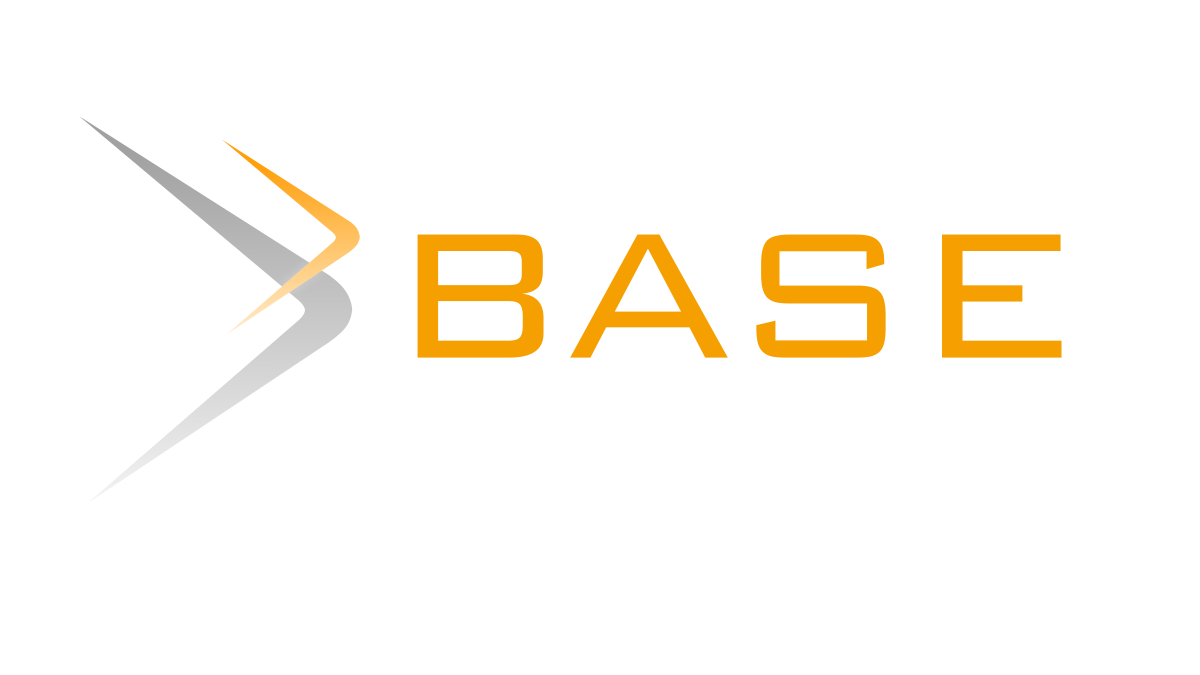The Effect of Perceived Usefulness, Trust and Visual Information toward Attitude and Purchase Intention
DOI:
https://doi.org/10.35313/jmi.v1i01.12Keywords:
Instagram Food Blogger, Perceived Usefulness, Trust, Visual Information, Attitude, Purchase IntentionAbstract
Bandung is one of culinary cities in Indonesia that continues to show the growth of restaurant businesses. It provides intense competition for the culinary industries to keep the businesses alive. The consumer trend itself changes to how-to learning company through the choice of article, for example the use of Instagram. This study thus aims to identify the influence of Instagram food blogger elements namely perceived usefulness, trust, and visual information on consumer buying attitudes and their purchase intentions. To test the proposed model, this study applies variance-based structural equations Partial Least Squares (PLS) modeling with 200 Instagram food blogger who are recommended by the readers in Bandung, Indonesia as the samples. The results show all variables have positive effects on attitudes and purchase intention. In contrary, perceived usefulness does not give significant effect on purchase intention. As a follow-up on the results of the study, the managerial implication of these findings is discussed.
References
Abdullah, D., Hambali, M., Kamal, S. B. M., Din, N., & Lahap, J. (2016). Factors influencing visual electronic word of mouth (e-WOM) on restaurant experience. Proceedings of the 3rd International Hospitality and Tourism Conference (IHTC 2016) & 2nd International Seminar on Tourism (ISOT 2016), 519–523.
Anderson, J. C., & Gerbing, D. W. (1988). Structural equation modeling in practice: A review and recommended two-step approach. Psychological Bulletin, 103(3), 411.
Awa, H. O., Ojiabo, O. U., & Emecheta, B. C. (2015). Integrating TAM, TPB, and TOE frameworks and expanding their characteristic constructs for e-commerce adoption by SMEs. Journal of Science & Technology Policy Management.
BPS-Kota Bandung. (2016). Kota Bandung Dalam Angka-2016. https://bandungkota.bps.go.id/publication/2016/07/15/e1f27d4d9f7cadf8fc33a97a/kota-bandung-dalam-angka-2016.html
Casaló, L. V, Flavián, C., & Guinalíu, M. (2011). Understanding the intention to follow the advice obtained in an online travel community. Computers in Human Behavior, 27(2), 622–633.
Chun-Hsing, C. (1986). Modern psychology. Tunghua Publication.
Colucci, C., & Cho, E. (2014). Trust-inducing factors of Generation Y blog-users. International Journal of Design, 8(3).
Cyr, D., Head, M., Larios, H., & Pan, B. (2009). Exploring human images in website design: a multi-method approach. MIS Quarterly, 539–566.
Belle. (2016). At the Restaurant: Survey Report on Indonesian Millennials Restaurant Habit. https://blog.jakpat.net/at-the-restaurant-survey-report-on-indonesian-millennials-restaurant-habit/.
Daniel. (2018). The State Blogging Industry 2017. https://www.dailyinfographic.com/state-of-blogging-industry.
Daryanto, A., de Ruyter, K., & Wetzels, M. (2010). Getting a discount or sharing the cost: The influence of regulatory fit on consumer response to service pricing schemes. Journal of Service Research, 13(2), 153–167. https://doi.org/10.1177/1094670509351566
Davis, F. D. (1985). A technology acceptance model for empirically testing new end-user information systems: Theory and results. Massachusetts Institute of Technology.
Fiore, A. M., Jin, H., & Kim, J. (2005). For fun and profit: Hedonic value from image interactivity and responses toward an online store. Psychology & Marketing, 22(8), 669–694.
Fornell, C., & Larcker, D. F. (1981). Evaluating structural equation models with unobservable variables and measurement error. Journal of Marketing Research, 18(1), 39–50.
Fukuyama, F. (1995). Trust: The social virtues and the creation of prosperity. World and I, 10, 264–268.
Gefen, D. (2000). E-commerce: the role of familiarity and trust. Omega, 28(6), 725–737.
Goodrich, K. (2011). Anarchy of effects? Exploring attention to online advertising and multiple outcomes. Psychology & Marketing, 28(4), 417–440.
Greenwood, S., Perrin, A., & Duggan, M. (2016). Social media update 2016. Pew Research Center, 11(2), 1–18.
Guritno, S., & Siringoringo, H. (2013). Perceived usefulness, ease of use, and attitude towards online shopping usefulness towards online airlines ticket purchase. Procedia-Social and Behavioral Sciences, 81, 212–216.
Hair, JR., Anderson, R.E., Ronald, L.T, and William, C. B. (2010). Multivariate Data Analysis (7th ed.). Prentice-Hall International, Inc.
Hair, J. F., Ringle, C. M., & Sarstedt, M. (2011). PLS-SEM: Indeed a silver bullet. Journal of Marketing Theory and Practice, 19(2), 139–152. https://doi.org/10.2753/MTP1069-6679190202
Hair, J. F., Sarstedt, M., Hopkins, L., & Kuppelwieser, V. G. (2014). Partial least squares structural equation modeling (PLS-SEM): An emerging tool in business research. European Business Review, 26(2), 106–121. https://doi.org/10.1108/EBR-10-2013-0128
Hair, J., Hollingsworth, C. L., Randolph, A. B., & Chong, A. Y. L. (2017). An updated and expanded assessment of PLS-SEM in information systems research. Industrial Management & Data Systems, 117(3), 442-458. https://doi.org/https://doi.org/10.1108/IMDS-04-2016-0130
Halvorsen, K., Hoffmann, J., Coste-Manière, I., & Stankeviciute, R. (2013). Can fashion blogs function as a marketing tool to influence consumer behavior? Evidence from Norway. Journal of Global Fashion Marketing, 4(3), 211–224. https://doi.org/10.1080/20932685.2013.790707
Hanifati, A. N. (2015). The impact of food blogger toward consumer’s attitude and behavior in choosing restaurant. International Journal of Humanities and Management Services, 3(3), 149–154.
Ho, C.-H., Chiu, K.-H., Chen, H., & Papazafeiropoulou, A. (2015). Can internet blogs be used as an effective advertising tool? The role of product blog type and brand awareness. Journal of Enterprise Information Management.
Hsu, C., Lin, J. C., & Chiang, H. (2013). The effects of blogger recommendations on customers’ online shopping intentions. Internet Research.
Ing, G. P., & Ming, T. (2018). Antecedents of consumer attitude towards blogger recommendations and its impact on purchase intention. Asian Journal of Business and Accounting, 11(1), 293–323.
Jaakonmäki, R., Müller, O., & Vom Brocke, J. (2017). The impact of content, context, and creator on user engagement in social media marketing. Proceedings of the 50th Hawaii International Conference on System Sciences.
Kim, M., & Lennon, S. (2008). The effects of visual and verbal information on attitudes and purchase intentions in internet shopping. Psychology & Marketing, 25(2), 146–178.
Lee, K.-T., & Koo, D.-M. (2012). Effects of attribute and valence of e-WOM on message adoption: Moderating roles of subjective knowledge and regulatory focus. Computers in Human Behavior, 28(5), 1974–1984.
Lu, L.-C., Chang, W.-P., & Chang, H.-H. (2014). Consumer attitudes toward blogger’s sponsored recommendations and purchase intention: The effect of sponsorship type, product type, and brand awareness. Computers in Human Behavior, 34, 258–266.
Mansour, I. H. F., & Diab, D. M. E. (2016). The relationship between celebrities’ credibility and advertising effectiveness: The mediation role of religiosity. Journal of Islamic Marketing.
Marakarkandy, B., Yajnik, N., & Dasgupta, C. (2017). Enabling internet banking adoption: An empirical examination with an augmented technology acceptance model (TAM). Journal of Enterprise Information Management.
O’Brien, H. L. (2010). The influence of hedonic and utilitarian motivations on user engagement: The case of online shopping experiences. Interacting with Computers, 22(5), 344–352.
Oda. (2012). Pengembangan Pusat Kuliner Nusantara Kota Bandung Sebagai Tujuan Wisata. Khasanah Ilmu-Jurnal Pariwisata Dan Budaya, 3(1).
Park, D.-H., Lee, J., & Han, I. (2007). The effect of on-line consumer reviews on consumer purchasing intention: The moderating role of involvement. International Journal of Electronic Commerce, 11(4), 125–148.
Plotkina, D., & Munzel, A. (2016). Delight the experts, but never dissatisfy your customers! A multi-category study on the effects of online review source on intention to buy a new product. Journal of Retailing and Consumer Services, 29, 1–11.
Poor, M., Duhachek, A., & Krishnan, H. S. (2013). How images of other consumers influence subsequent taste perceptions. Journal of Marketing, 77(6), 124–139.
Rauniar, R., Rawski, G., Yang, J., & Johnson, B. (2014). Technology acceptance model (TAM) and social media usage: An empirical study on Facebook. Journal of Enterprise Information Management, 27(1), 6–30. https://doi.org/10.1108/JEIM-04-2012-0011
Sallam, M. A. A., & Wahid, N. A. (2012). Endorser credibility effects on Yemeni male consumer’s attitudes towards advertising, brand attitude and purchase intention: The mediating role of attitude toward brand. International Business Research, 5(4), 55.
Septiawan, H. (2015, November 23). Bandung Ditetapkan Sebagai Destinasi Wisata Kuliner Oleh Kemenpar. Https://Www.Destinasibandung.Co.Id/Bandung-Ditetapkan-Sebagai-Destinasi-Wisata-Kuliner-Oleh-Kemenpar.Html. https://www.destinasibandung.co.id/bandung-ditetapkan-sebagai-destinasi-wisata-kuliner-oleh-kemenpar.html
Shaouf, A., Lü, K., & Li, X. (2016a). The effect of web advertising visual design on online purchase intention: An examination across gender. Computers in Human Behavior, 60, 622–634.
Shaouf, A., Lü, K., & Li, X. (2016b). The effect of web advertising visual design on online purchase intention: An examination across gender. Computers in Human Behavior, 60, 622–634. https://doi.org/10.1016/j.chb.2016.02.090
Shiratuddin, N., Hassan, S., & Landoni, M. (2003). A usability study for promoting eContent in higher education. Journal of Educational Technology & Society, 6(4), 112–124.
Spears, N., & Singh, S. N. (2004). Measuring attitude toward the brand and purchase intentions. Journal of Current Issues & Research in Advertising, 26(2), 53–66.
Tenenhaus, M., Vinzi, V. E., Chatelin, Y. M., & Lauro, C. (2005). PLS path modeling. Computational Statistics and Data Analysis, 48(1), 159–205. https://doi.org/10.1016/j.csda.2004.03.005
Tien, D. H., Rivas, A. A. A., & Liao, Y.-K. (2019). Examining the influence of customer-to-customer electronic word-of-mouth on purchase intention in social networking sites. Asia Pacific Management Review, 24(3), 238–249.
Wang, H.-Y. (2011). Exploring the factors of gastronomy blogs influencing readers’ intention to taste. International Journal of Hospitality Management, 30(3), 503–514.
Wang, Y., & Rajagopalan, N. (2015). Alliance capabilities: review and research agenda. Journal of Management, 41(1), 236–260.
Wells, W. D. (2014). Measuring advertising effectiveness. Psychology Press.
Wu, W.-L., & Lee, Y.-C. (2012). The effect of blog trustworthiness, product attitude, and blog involvement on purchase intention. International Journal of Management & Information Systems (IJMIS), 16(3), 265–276.
Yang, C., & Brown, B. B. (2015). Factors involved in associations between Facebook use and college adjustment: Social competence, perceived usefulness, and use patterns. Computers in Human Behavior, 46, 245–253.
Downloads
Published
How to Cite
Issue
Section
License
Copyright (c) 2021 Journal of Marketing Innovation (JMI)

This work is licensed under a Creative Commons Attribution-ShareAlike 4.0 International License.


















